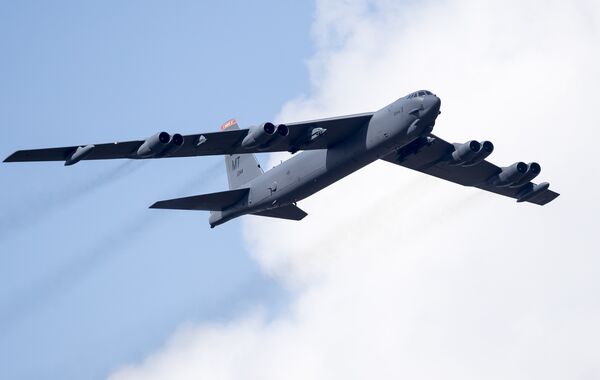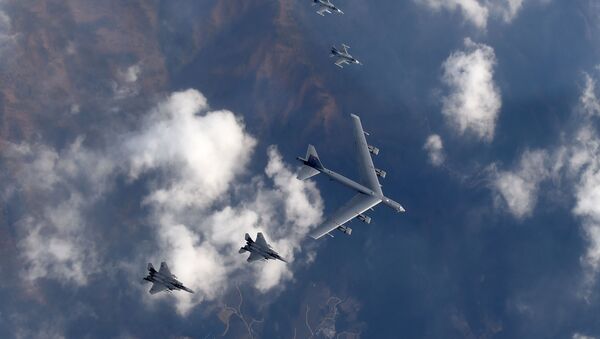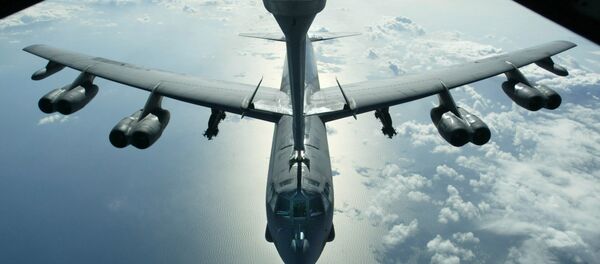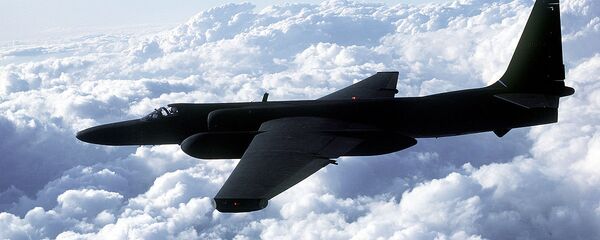The initial report that Washington was planning to put its Stratofortress bombers back in the air, ostensibly over the threat posed by North Korea, was shot down by the Pentagon the next day. However, on Friday, just days ahead of President Trump's upcoming South Korea visit, Vice President Mike Pence ratcheted up fears again, telling personnel at a North Dakota base containing B-52s and ICBM launch sites to "be ready" for a possible confrontation with Pyongyang.
Observers say that if the Stratofortresses are sent back to the skies on 24/7 alert now, the situation would be even more dangerous than it was during the Cold War. In an op-ed for RIA Novosti, journalist and Radio Sputnik contributor Vladimir Barsegyan pointed out that back then, at least the USSR's western borders were 'covered' by the airspace of the communist bloc countries. Since then, he noted, this bloc has dissolved, and been absorbed by NATO, which then proceeded to expand into the former Soviet Union proper in the Baltic states.
"This means that today, the Pentagon is tempted to approach Russia along its European borders," the journalist wrote. "They have already taken some first steps."
This summer, for example, three B-52s from the Barksdale Air Force Base in Louisiana, along with B-2 Spirit and B-1B Lancer bombers, were sent to Europe to participate in the BALTOPS and Saber Strike drills across Estonia, Latvia, Lithuania and Poland. This included operations over western Estonia, less than 200 km from the Russian border. The US strategic bombers have made similar stopovers in the region repeatedly since 2014, after the deterioration in relations between Russia and the West over the crisis in Ukraine.
In this connection, Barsegyan noted, given the Pentagon's plans to modernize and upgrade its Europe-based nuclear arsenal, including warheads stationed at the Ramstein Air Base in Germany, the US military will be able to minimize bombers' flight time toward Russia's borders.
"And this is a disturbing development, especially since dangerous incidents are also prone to arise, even in relative peacetime," the journalist stressed.

Five years later, on January 17, 1966, another B-52 crashed after colliding with a KC-135 tanker during refueling over the Mediterranean Sea off the Spanish coast, dropping its four hydrogen bombs near the small fishing village of Palomares. The conventional explosives in two of the bombs exploded, polluting the area with radioactive contamination. Another fell into the Mediterranean Sea, prompting a search that would take nearly three months.

During the Cold War, the US Air Force lost a total of 11 nuclear bombs to such accidents. If the B-52s' 24 hour on alert flights were renewed, what guarantee can there be that more accidents will not occur, particularly in hot spots like the Baltic region?
In light of this possibility, Barsegyan noted that one "sad symbol of the Cold War era – the Doomsday Clock," is again gaining its relevance. At the end of the Cold War, "the boys in military uniform were wised up and stopped, and their dangerous toys taken away from them. Now, it seems they have gotten their hands on them again," the commentator concluded.



